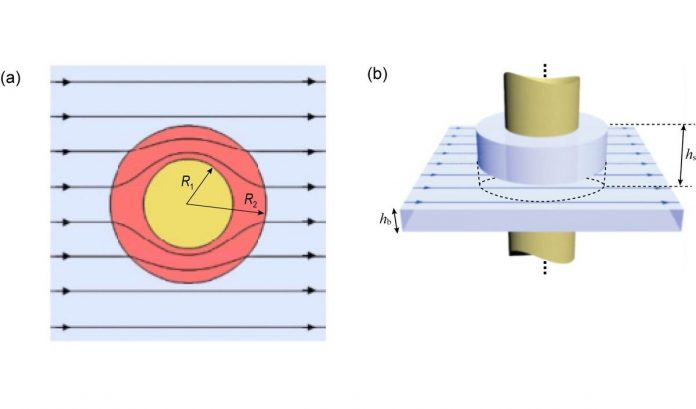The invisibility cloak can make the wearer transparent. The wearer will be undetectable to observers outside. Till now, this device has existed only in science fictions. But a recent development of the metamaterial technology has given a possible route to implement the invisibility cloak in reality.
Sir John Pendry and coworkers have introduced the concept of the metamaterial invisibility cloak in 2006. After that, scientists have tried to implement different versions of invisibility cloaks. They have invented optical cloaks which can make the object transparent for visible light. Rader cloaks which can render the object undetectable from radar detection. Acoustic cloaks which can make the object invisible for sound.
These cloaks reply on metamaterials, which are artificially structured building blocks with judiciously designed unit cells. The unit cells work as artificial atoms of the metamaterial. They can control the speed of light or sound, which is a property critical for cloak engineering. This concept can be extended to fluid dynamics to control fluid flow. The fabrication of metamaterial unit cells involves complex micro or nanofabrication. This makes the implementation of the large-scale invisibility cloak difficult.
In their new research, scientists aim at making a simplified version of the large-scale invisibility cloak without using any metamaterials.
Scientists used a special type of invisibility cloaks in ideal fluid flow. The fluid flows along a straight line, without any obstacle. In the presence of obstacle, the straight streamline will be defected and spread over the whole space. Scientists detected the distortions of the streamlines. An observer is able to sense the size, shape, and position of the obstacle. The fluid-flow cloak will conceal such distortions and restore original straight streamlines. It will control the speed of the fluid flow. This will also guide the fluid to flow faster closer to the obstacle and slower farther from it. The fluid will pass through the obstacle. It will return to the original path and continues to flow along a straight line as if the obstacle is not there.
Bernoulli equation says that the speed of the fluid flow is inversely proportional to the square root of the mass density of the fluid. In order to control the speed of the fluid flow, one needs to engineer the mass density of the fluid.
Scientists tackled this problem from a different perspective. They used an alternative way to control the density of the fluid. They engineered the thickness of the fluid channel. They proved that thicker fluid channel has smaller mass density and there the fluid flows faster. So, a large-scale invisibility cloak can be implemented by making the fluid channel thicker closer to the obstacle and thinner farther from it.
Scientists also recorded the fluid dynamics and compared the fluid flows in three different cases. The left panel showed that the fluid flows along a straight path in a homogeneous channel. The middle panel showed the streamlines are deflected by a bare obstacle. The right panel showed how the fluid flow is guided around the obstacle. Then it returns to the original path without deflection. This research provides a powerful platform to implement large-scale fluid-flow cloaks. This research also has far-reaching impacts for fluid control in microfluid channels.

